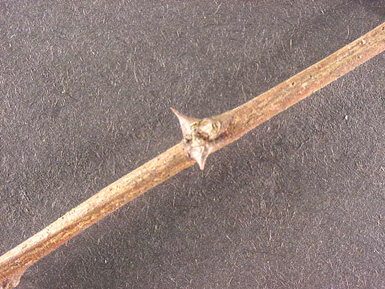Form: The tree is medium sized reaching 40 to 60 ft. in height and 1 to 2 ft. in dbh. It often forms thickets by suckering.
Leaves:
Arrangement: alternate; pinnately compound w/ 7-19 leaflets
Shape: oval
Margin: entire
Texture: n/a
Venation: n/a
Bark: The bark is blackish in color and is deeply furrowed with interlacing, rounded ridges that resembles a woven rope.
Twigs and buds: Twigs have stipular spines from each side of the node.

Flowers and fruit: The flowers appear in a drooping raceme and are all white and fragrant. The fruit is a brown, flat, oblong pod that resembles a large pea pod.
Distinguishing characteristics: This tree has a pea pod fruit, spines on the twigs and bark blackish in color and is deeply furrowed with interlacing, rounded ridges that resembles a woven rope.
Range: This species occurs from southern Ohio to northern Alabama, east to South Carolina.
Silvics: This species is intolerant and occurs from dry, moist soils to dry slopes. It is also noted as a pioneer species.
Ecological and cultural importance: The tree is a nitrogen fixer and has a very hard wood, used for fence posts.